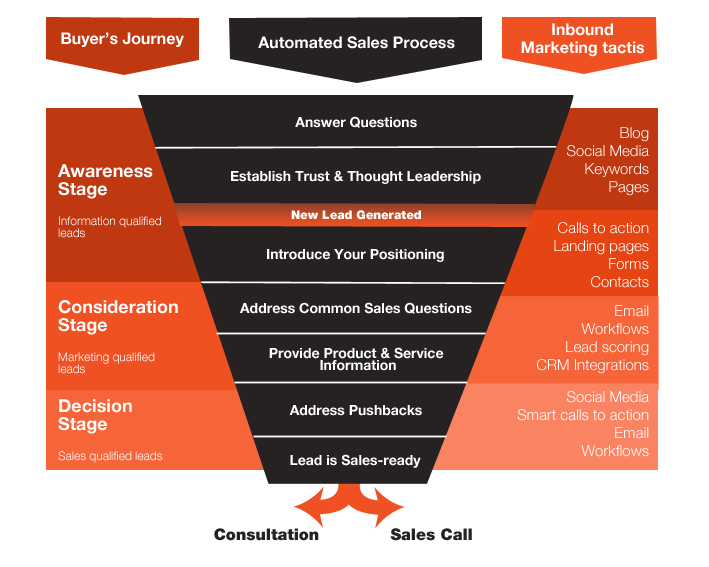When it comes to both B2B and B2C marketing, one thing is certain - the customer experience lies right at the heart of it.
With customer acquisition costing between 5 and 25 times more than retaining existing customers, providing a memorable and positive experience can easily help sustain the growth of your business.
Why Think About the Customer Experience?
Customer experience is about the interactions and the influence between a company and a customer, from the customer’s perspective. Although a labour-intensive practice, mapping out a holistic view of various possible journeys that customers can follow within your business is worth the investment.
A great customer experience drives more customer engagement, which drives business acquisition and retention.
However, without the right software and processes in place, providing a consistent experience across various journeys for all might prove to be difficult.
This is why a scalable CRM system is so important piece of this puzzle. CRM systems allow businesses to target the right customer, using the right tools, at the right time. In addition, all this can be automated to ensure the consistency many businesses find elusive.
The Buyer’s Journey
Every business’s marketing and sales efforts rely on the buyer’s journey. Simply put, the buyer’s journey can be defined as the phases that a potential customer goes through before buying a product or service. These include:
- The Awareness Stage (Top of the funnel)
- Evaluation stage (Middle of the funnel)
- Decision stage (Bottom of the funnel)
Top of the funnel
The top of the funnel represents a wide net of prospects coming in from different sources for any of three reasons - to solve a problem, get an answer or meet a need. At this point, prospects are aware of a specific problem and are looking for surface-level educational content that can point them towards a solution.
Middle of the funnel
The middle of the funnel contains a somewhat refined set of leads that are now searching for the best solution to the problem. This stage of the funnel represents a period of extended engagement between your business and the customer as you establish trust, strengthen the relationship, and help them evaluate possible solutions.
Bottom of the funnel
The bottom of the funnel represents the point at which a lead decides on a specific solution. There’s still the possibility that they might not buy from you and, therefore, need nudge in your direction.
How do we get the customer to move down the funnel you may ask? Content. If change is the only constant, then content is that change. With the right content, businesses can appeal to the customer in every stage of the buyer’s journey, thereby adding value and building positive momentum on their journey.
Now that we have briefly mentioned content, let's further discuss the types of content in each stage.
How to Use Content to Drive your Customer Journey
Awareness stage
The Awareness Stage is characterised by the gathering of information which can be obtained from a number of sources.
According to Adweek, 81% of shoppers conduct online research before making a purchase. Typically, this would consist of informative and educational content pieces in the form of blogs, ebooks and guides.
Other sources such as how-to videos, social media content and reviews are also largely trusted sources of information.
Evaluation stage
In the Evaluation stage, customers are on the fence regarding the solution that will fit them best. At this point, any business needs to use its content to position itself as an expert.
Content that could help shape customer perceptions about your brand includes product webinars, white papers and demo videos detailing how your products compare to other solutions in the market. This content provides more information as to why they need your product or service.
Decision stage
At this point, prospects in the Decision stage have already engaged with your brand on a few occasions. However, it still doesn’t guarantee they will choose you over your competitor.
To spike their interest further, businesses can offer a number of content offers including case studies, free product/service trials, consultations and live demos.
At the end of the day, it’s all about creating a more engaging journey for the customer. Every business will have a unique sales funnel tailored to their buyer’s journey which can be altered to fit each individual customer.
That being said, the key elements to consider are understanding your audience, developing a structured funnel around your industry, and considering your audience’s intent.
This intent can then be created into a strategy that lays out the content that is specifically targeted towards each phase of their journey.
Automating the Journey
One of the most important tools that encompasses content and appeals to each stage of the buyer’s journey is email. Not only is it the preferred customer acquisition tactic for marketers, but it also provides an impressive return on investment.
Why email?
Over the past decade, email marketing has been dramatically simplified with the use of a CRM and automation capabilities.
Email Marketing Automation consists of setting up workflows in your CRM that automatically send out email messages or queue certain tasks and actions that will be triggered by a prospect’s actions.
This is super useful because it focuses on the bigger picture, and makes small, tedious tasks redundant.
Preparing email lists, sending generic messages and setting up events that no longer need to be added manually. This frees up marketers and salespeople and allows them more time to work on more productive projects or bigger deals.
Pinpoint problems in the awareness stage
Using email marketing automation workflows in the Awareness stage can help prospects define their problems while helping them gather info on solutions.
Say our company produces downloadable content on several industry topics, including dog food. Form submission to download the asset, “6 Dietary tips for Dogs” could trigger a workflow that sends the contact other educational content like blogs and guides about dog food meal prep and optimal serving tips.
Keep prospects moving in the evaluation stage
Email automation can be used in the Evaluation stage in a number of ways, depending on the desired outcome.
You can automate communications to webinar registrants, nurture prospects with expert guides and demo videos and much more. Ultimately, we want to continue moving prospects further down the funnel towards a purchase.
Convert in the decision stage
On any given website, certain pages and conversion events will point towards more product interest than others - such as viewing pricing and product pages.
In the Decision stage, the prospect has most likely narrowed his/her options down to a small list of solutions. A contact viewing these pages can trigger workflows such as the internal sales rep notification workflow, which sends an email notification to your sales rep, informing them of these high-value activities.
Capabilities such as these, together with information collected gradually over the entire customer journey, allow sales reps to reach out to customers with the relevant information on hand at the right time.
Final Thoughts
A positive customer experience is essential to any business looking to grow. Being able to provide memorable experiences reduces churn rates, increases customer lifetime value and aids customer acquisition through referrals and social proof.
Although a difficult process to scale, a reliable CRM and Marketing Automation system like as HubSpot makes it easy for businesses to positively engage many customers simultaneously, in a personalised manner. Often, CRM implementation falls short of objectives due to a number of factors but also holds massive potential to be a game-changer for every business that gets it right.







